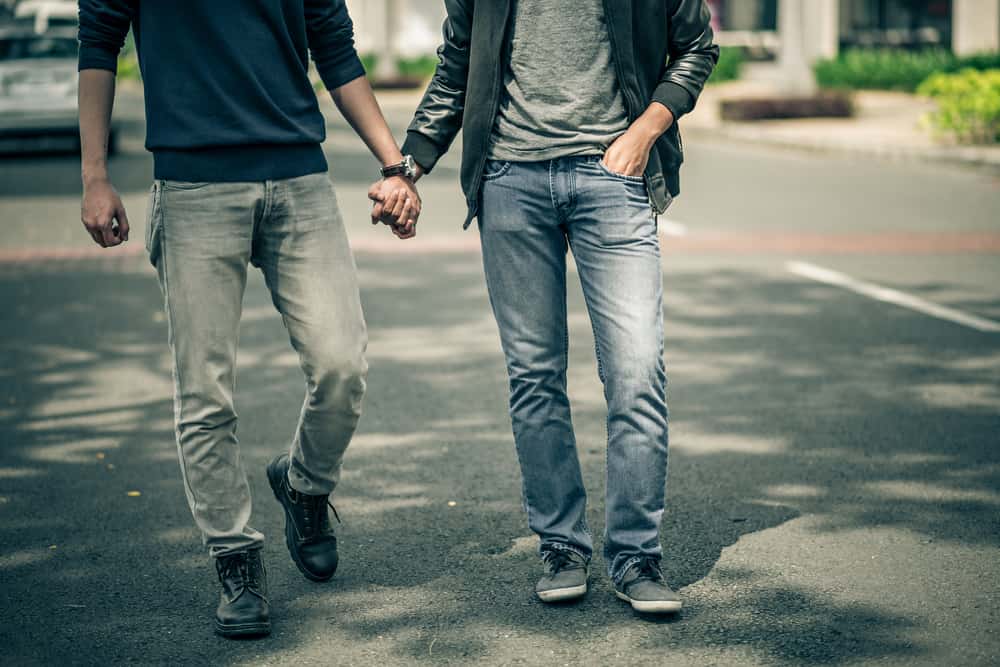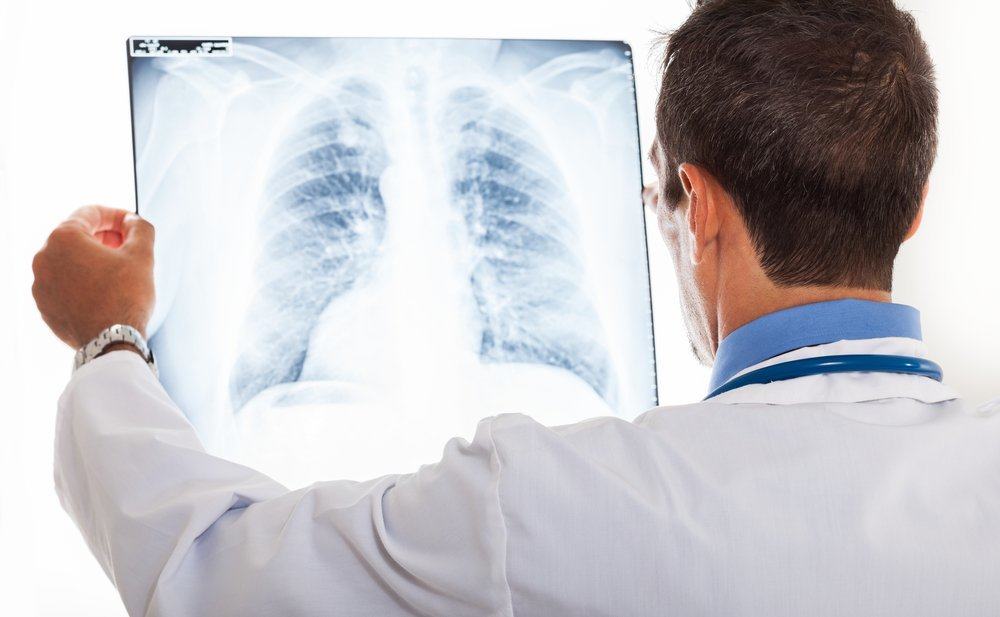Contents:
Medical Video: Delhi Gay Pride- LGBT community answers all the silly questions anyone ever had on homosexuality
The campaign towards social equality in society is highly dependent on educating facts and stopping the spread of misinformation about some conditions that experience discrimination, especially homosexuals - gays and lesbians.
One of the biggest challenges to helping people better understand LGBT is to try to understand the big idea, beyond a number of ambiguous information that is widely circulating. In order to have healthy dialogue about LGBT issues, it is important to end lies, stereotypes, myths and misunderstandings.
What is homosexuality?
Homosexuality is an emotional, romantic, intellectual, and / or sexual attraction to people of the same gender. The term homosexuality has a medical root from the turn of the last century (early 1900s) and most people now usually use the term gay and lesbian instead. "Gay" is generally used to describe men who are interested in men, and "lesbians" for women who are interested in women.
Is being gay normal?
Gay, lesbian or transgender (LGBT) people are members of every community. They are diverse, come from all walks of life, and include people of all ages, races and ethnicities, socio-economic status, and from various parts of the region. We all know a number of LGBT people, whether we realize it or not.
There are several examples in various religious texts that can and have been used against homosexuality. Some religious leaders and movements chose to use it; others believe that these texts are a reflection of the social habits of the time at the time, not related to LGBT identity and relationships as we know them today, and do not have to be translated literally into policies for contemporary times.
Gender sex and gender fluidity have also been noted in various animal kingdoms (penguins, dolphins, bison, geese, giraffes, to primates; only a few of the many species sometimes pair up with same-sex partners) and from every culture that known in the world (prehistoric rock paintings in South Africa and Egypt, ancient Indian medical texts, and literature from the Ottoman government regime, for example).
When did someone first know that he was homosexual?
A person can realize sexual orientation and gender identity at various moments in their lives. While some people are aware of their sexual preferences from an early age, others are just beginning to understand their gender identity and sexual orientation in adulthood. It is important to note that there is not one thing / event experienced in life that can make someone become gay, lesbian or bisexual.
Although an event in life can help them become aware of their gender identity and sexual orientation, they do not need to experience sexual experience first to be aware of their sexual orientation. The same is true for heterosexual men who know that they are attracted to women, even though he is still a virgin. Or a heterosexual woman knows that she is attracted to men, even though they are still virgins. They know. The same is true for gays, lesbians, and bisexuals.
What causes homosexuality?
The factors that determine sexual orientation are complex phenomena. There is a growing understanding that humans have basic sexuality that can be expressed in various relationships: homosexual, bisexual, and heterosexual. Although the cause is unknown, some researchers believe the basic sexual orientation of an individual tends to appear at birth.
If I'm a "normal" man, can you someday be gay?
Once it has been formed, sexual orientation and / or sexual identity tends to change.
Many people think that homosexuality and heterosexuality are at the opposite ends of the spectrum of sexuality, with bisexuality in the middle. In fact, human sexuality is far more complex. For example, some men may think of themselves as heterosexual but have homosexual attraction (be it intellectually, emotionally, or platonically) towards other men. There are also a small number of men who are only looking for physical intimacy with other men. This can be considered pure sexual behavior and these people may not always identify themselves as gay. Likewise, many gay people do not need to experience physical intimacy with other gay men to show their sexual orientation.
Is homosexuality a psychiatric disorder?
The Association of Indonesian Mental Medicine Specialists (PDSKJI), reported from the Jakarta Post, classifies homosexuality, bisexuality, and transgender conditions as mental disorders, which are said to be cured through appropriate treatment. However, many large, separate, and recent studies have shown that sexual orientation occurs naturally.
In fact, research shows that attempts to change sexual orientation - called "conversion therapy" or "reparative therapy" - can be dangerous, and are associated with depression, suicide, anxiety, social isolation, and decreased capacity for intimacy. For this reason, the Psychiatric and Statistical Manual of Mental Disorders (DSM) manual is no longer classifying lesbian, gay, bisexual, or transgender people as psychiatric disorders. Homosexuality was first listed in the DSM as a psychiatric condition in 1968, and was deleted in 1987. The World Health Organization (WHO) later followed to abolish homosexuality in 1992.
However, an individual who questions his sexual orientation may experience anxiety, uncertainty, confusion, and inferiority among many other emotions. When these emotions are not handled properly, they can cause depression.
Is being gay a lifestyle choice?
Although some claim that being gay is a choice, or that homosexuality can be cured, the available scientific evidence is same-sex attraction turns out to be the result of genetic and biological influences. Reporting from Time, the first major breakthrough that argues that "homosexuality is a life choice" was made by neuroscientist Simon LeVay in his 1991 study. He found that an area in the hypothalamus of the brain is related to sexuality, INAH3, compared to gay men and women compared to heterosexual people. The following year, UCLA researchers found an association in other areas of the brain related to sexuality, the central part of the anterior sagittal commissure, 18 percent greater in gay men than hetersexual women and 34 percent greater than "normal" men.
Genes and hormones have an influence on the formation of sexual orientation
No study has found specific "gay genes" that are believed to make someone gay. But some genes can increase a person's chances of being gay. For example, according to the American Psychiatric Association (APA), a 2014 study in the journal Psychological Medicine showed that genes on the X chromosome (one of the sex chromosomes) called Xq28 and genes on chromosome 8 appeared to be found in higher prevalence in gay men. The study, which involved more than 400 pairs of homosexual siblings, followed a 1993 report by geneticist Dean Hamer suggesting this "gay gene" and a number of other studies showed that genes play a role, though not necessarily the only one, in determining orientation sexual. Furthermore, twin studies show that gene sequences cannot be a complete explanation. For example, identical twins of a gay man, despite having the same genome, only have a 20-50% chance of being gay. And like most genetically determined traits, it is possible that more than one gene plays a role.
There is other evidence that shows exposure to certain hormones during fetal development also plays a role. A 2011 science review by Belgian researcher Jacques Balthazart published in the journal Endocrinology concluded that "homosexual subjects were, on average, exposed to atypical endocrine conditions during development," and that "significant endocrine changes during embryonic life often result in increased incidence of homosexuality". That is why some have suggested that epigenetics might be involved. During development, chromosomes are subject to chemical changes that do not affect the nucleotide sequence but can activate or deactivate genes.
In addition, genetic and hormonal factors generally interact with undetermined environmental factors, although there is no concrete evidence of a pattern of wrong parenting, childhood trauma, or exposure to other gay individuals can cause homosexuality.
Can I know what is the difference between gay men and not?
"Men who act in feminine ways must be gay. Masculine woman with short haircut and heavy voice means lesbian. "This is an assumption that many people believe.
Contrary to common belief, you cannot distinguish whether someone is homosexual or bisexual. This stereotype only applies to around 15% of gays and 5% of lesbians. This stereotype confuses the concept of sexual orientation (whether you prefer gender or opposite as a sexual partner) with gender roles (showing masculine or feminine behavior).
Lesbians, gays, and bisexuals have varied personalities, in ways of dressing, behavior, and lifestyle. The same is true for heterosexual people. Apart from this diversity, the stereotypes about transvestites or masculine women persist. Although some gay people reflect this characteristic, the majority of lesbians and gay men do not fit the stereotype. On the other hand, many men are "feminine" and masculine women identify themselves as heterosexual. There are also some heterosexual (straight) individuals who may behave in ways that are considered stereotypical gay or bisexual.
Are all pedophile men gay?
In fact, these two phenomena have nothing in common: the chance of homosexual men to sexually abuse children is not greater than that of men who are "straight". According to the American Psychological Association, children are more likely to be persecuted by their parents, neighbors, or close relatives, compared to their LGBT friends.
Quoted from Live Science, a 1989 study led by Kurt Freund of Clarke Institute of Psychiatry in Canada, scientists showed images of children in gay and heterosexual adult men, and measured their sexual arousal. Homosexual men do not react more strongly to images of boys than heterosexual men reacting to images of girls. A 1994 study, led by Carole Jenny of the University of Colorado Health Sciences Center, examined 269 cases of children who were sexually abused by adults. In 82 percent of cases, suspected perpetrators were heterosexual adults from close child relatives, according to a report published in the journal Pediatrics. Only two of the 269 cases were identified as gay or lesbian. 97 percent of child abuse perpetrators are adult heterosexual men who target girls.
Reporting from the SPL Center, The Child Molestation Research & Prevention Institute notes that 90% of child molesters target children in their own family and friend's network, and the majority are adult men who are married to women.
Can homosexuality be cured?
Conversion therapy is a practice that claims to be able to turn homosexuals into heterosexuals in a matter of months. This includes a series of dubious procedures - electric shock therapy or the use of nausea-vomiting drugs, testosterone hormone prescription, or speech therapy.
Pulkit Sharma, a psychoanalytic clinical psychologist and therapist from Delhi, reported by the Daily Mail, said, "There is absolutely no scientific evidence that this treatment will be effective."
"Reparation" or sexual reorientation therapy has been rejected by all leading medical, psychological, psychiatric and professional counseling organizations in the United States. In 2009, for example, the American Psychological Association concluded that there is strong evidence to show that cases of gay individuals who are "cured" back into straight men are very rare events and that, "Many individuals continue to experience same-sex sexual attraction , "After reparative therapy. The APA resolution added that "there is not enough evidence to support the use of psychological interventions to change sexual orientation" and ask mental health professionals to avoid promoting the efficacy of wrong sexual orientation efforts by promising changes in sexual orientation.
A large number of medical professionals, scientific organizations and counseling in the US and around the world have issued statements regarding the dangers that can be caused by reparative therapy, especially if this is based on the assumption that homosexuality is an unacceptable thing. In early 1993, the American Academy of Pediatrics stated, "Therapy directed specifically to change sexual orientation is contraindicated, because it can provoke guilt and anxiety while having little or no potential to achieve orientation change."
Efforts to change a person's sexual orientation, either by "corrective" therapy or rape carried out on gays and lesbians who aim to "straighten" them, involve human rights violations and can cause severe trauma; causes loss of sexual feelings, depression, anxiety, and suicidal tendencies.
READ ALSO:
- 3 HIV / AIDS Risk Groups, Besides Homosexuals and CSWs
- Can HIV infection through oral sex?
- All about Dominant-Submissive Sexual Relations












